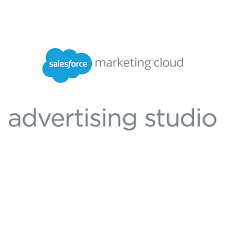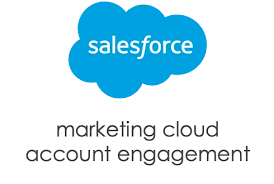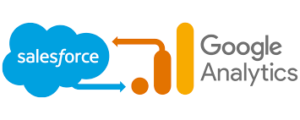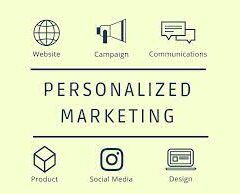How to Establish Connectivity Between Marketing Cloud Account Engagement and Advertising Studio in Salesforce. Looking to optimize your cross-channel marketing with email and ads? Use the power of Sales Cloud to connect Account Engagement and Advertising Studio for a unified strategy across platforms.
Requirements
Advertising is part of Marketing Cloud, but can be purchased as a standalone product. This
process works the same whether you have only Advertising or full Marketing Cloud access.
- You can repeat this process to use Account Engagement prospect data for multiple Advertising
Audiences. - Connection setup requires you to complete tasks in three places: Account Engagement, Salesforce, and Marketing Cloud (or standalone Advertising).
- Depending on your permissions and the structure of your org, it’s possible you need more than one person to complete this setup. Check out the implementation overview section in this insight for a printable planning worksheet.
Connect Account Engagement and Advertising Studio in Salesforce
Connecting Marketing Cloud Account Engagement and Advertising Studio involves tasks across Salesforce, Account Engagement, and Marketing Cloud. It’s not a straightforward ‘plug and play’ solution and may necessitate a Salesforce Partner like Tectonic, especially for those less advanced in the platform.
If you choose to proceed independently, ensure you meet the following requirements:
- Permission to view, add, and edit campaign objects in Salesforce.
- Marketing user permissions in Account Engagement.
- A verified Salesforce connector.
- Access to Advertising Studio or full access to Marketing Cloud.
- Marketing Cloud Connect enabled.
- A Marketing Cloud File Transfer Protocol (FTP) account and FTP user status.
If any of these requirements are not met, collaboration with other Salesforce admins and Account Engagement/Marketing Cloud users may be necessary to complete the following tasks. It is advisable to follow the tasks in order, as those within Salesforce and Account Engagement must be done before finalizing the setup in Marketing Cloud.
Salesforce Tasks
- Create a Salesforce Campaign:
- Go to the ‘Campaigns’ tab and select ‘New.’
- Choose a record type, name your campaign, set status to ‘In Progress,’ and type to ‘Social Media.’
- Select ‘Active’ and click ‘Save.’
- Build a Salesforce Report:
- On the ‘Reports’ tab, select ‘New Report.’
- Choose ‘Campaign with Campaign Members’ as the report type.
- Rename the report and add relevant columns.
- On the Outline tab, select Email as a column.
- Apply filters, such as ‘My active campaigns’ and the campaign name created earlier.
- Click ‘Save & Run.’
Marketing Cloud Account Engagement Tasks
Decide how Account Engagement prospects sync with the Salesforce campaign. Options include:
- Completion actions
- Segmentation rules
- Automation rules
- Page actions
- Engagement Studio program actions
Choose a method based on your Pardot setup. For example, adding new subscribers to a LinkedIn advertising campaign using Automation Rules.
The setup in Marketing Cloud involves three separate tasks: create a data import, an automation,
and an Advertising Audience. The tasks in this section are the same regardless of whether you have
full access to Marketing Cloud or have purchased only Marketing Cloud Advertising.
Marketing Cloud Tasks
Configuration involves three parts:
- Create a Data Import in Email Studio:
- In Email Studio, hover over Interactions and select ‘Import.’
- Create a data import, choose ‘Salesforce Objects & Reports’ for ‘File Location.’
- Select your Salesforce report and configure data extension generation.
- Save and complete the import setup.
- Create an Automation in Automation Studio:
- In Automation Studio, create a new automation, add a schedule, and configure data sync frequency.
- Add an import file step, selecting the data import created in Email Studio.
- Save, test your automation, and activate it.
- Create an Audience in Advertising Studio:
- In Advertising Studio, go to Advertising Audiences and click ‘Create Audience.’
- Enter a name, choose an ad network, select an ad account, and configure the audience based on the data extension created for the Salesforce report.
Connect Account Engagement and Advertising Studio
The setup is now complete, and Marketing Cloud Account Engagement and Advertising Studio are connected. New prospects in MCAE added to the Salesforce campaign will automatically update the Advertising Audience based on the sync frequency set.
After you complete the setup process, prospect data from Account Engagement is fed into Marketing
Cloud Advertising via Salesforce. The setup process outlined in this insight facilitates the flow of data
from Account Engagement to Salesforce, and then from Salesforce to Marketing Cloud Advertising.
This high-level overview of the data flow after setup is complete. An Account Engagement prospect
is added to a Salesforce campaign, which updates a Salesforce report, which is used to create a
Marketing Cloud data extension. The data extension is the source for an Advertising Audience.
Connect Marketing Cloud Account Engagement and Advertising Studio in Salesforce
Content updated February 2024.













